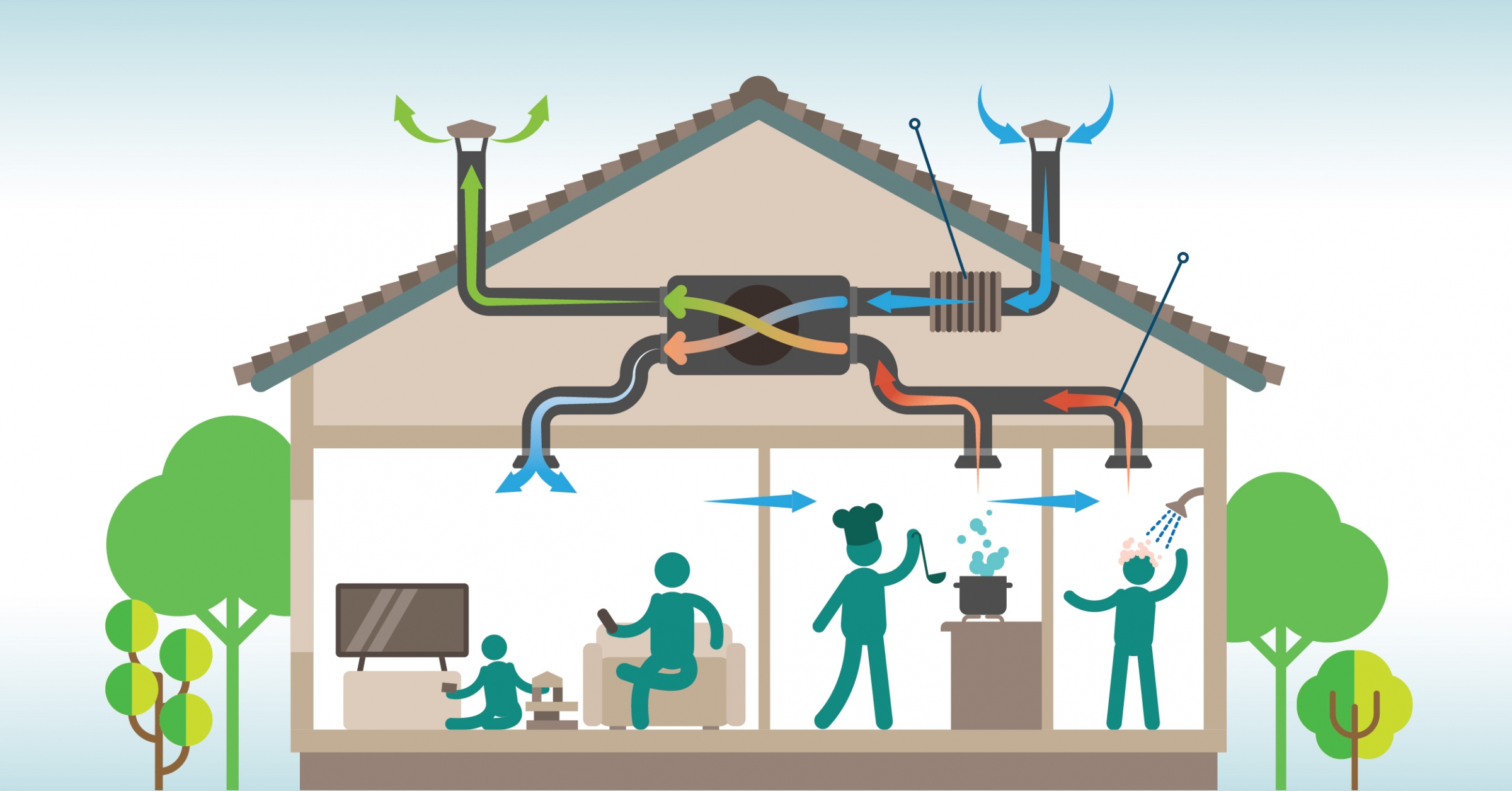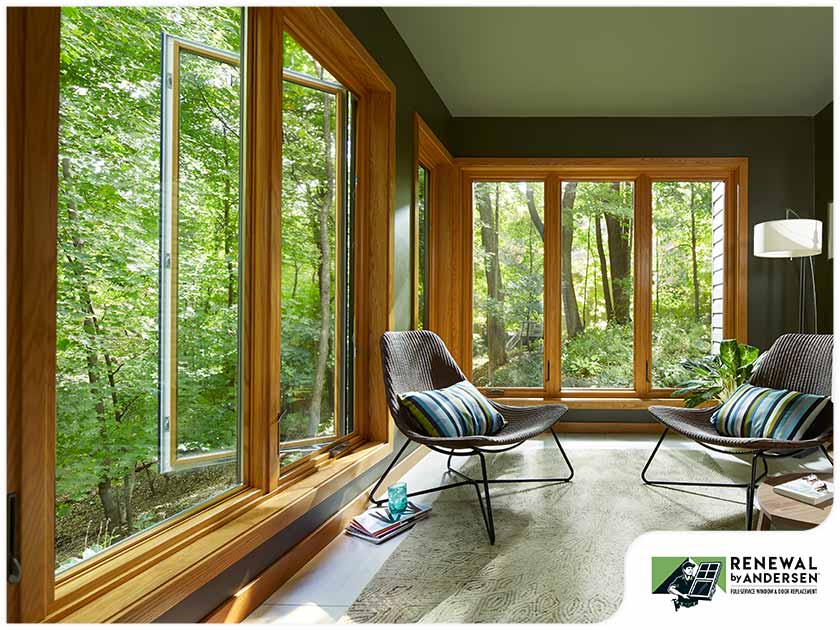Discovering Cutting-edge Solutions for Optimal Home Ventilation Equipments
Home ventilation plays an essential function in preserving health and wellness and comfort within living rooms. With developments in technology, cutting-edge remedies are arising to optimize these systems. Smart ventilation, power healing ventilators, and progressed filtration are reshaping how air high quality is taken care of - Home Ventilation Melbourne. The integration of these modern technologies elevates questions concerning their performance and adaptability in varied home atmospheres. What implications do these developments hold for future living requirements?
The Relevance of Home Air Flow for Health and Convenience
Usually overlooked, home air flow plays a crucial function in preserving both health and wellness and convenience within domestic spaces. Adequate air flow is important for the circulation of fresh air, which helps to water down interior toxins such as unstable natural substances, irritants, and smells. Without proper air movement, these pollutants can build up, resulting in breathing problems and various other health troubles. Additionally, effective ventilation adds to managing moisture degrees, avoiding mold and mildew growth and structural damages. By guaranteeing a balanced exchange of air, homeowners can appreciate a much more pleasant indoor atmosphere, boosting total wellness. Sufficient ventilation can enhance energy efficiency by reducing the requirement for excessive heating or cooling, inevitably resulting in lower energy costs and a more sustainable living space.
Smart Air Flow Solutions: Harnessing Modern Technology for Efficiency
Smart air flow systems stand for a significant improvement in home air management, leveraging IoT integration for enhanced control. These systems not only promote power efficiency however additionally use remote surveillance abilities, allowing individuals to enhance their indoor settings seamlessly. By harnessing innovation, property owners can achieve improved air quality while lowering power intake.
IoT Combination Advantages
Just how can IoT combination change typical air flow systems into highly reliable clever services? By including Net of Things (IoT) modern technology, air flow systems can attain real-time tracking and control, boosting their functional effectiveness. Sensing units positioned throughout a home gather information on air humidity, temperature, and top quality, enabling automated adjustments based upon existing conditions. This prompt responsiveness causes boosted interior air quality and convenience degrees. On top of that, IoT-enabled systems can communicate with other clever home tools, creating a natural community that maximizes energy use. Individuals can also accessibility and manage their ventilation systems remotely using smartphones, supplying convenience and boosted control. Overall, IoT assimilation represents a substantial advancement, bringing knowledge and versatility to typical air flow methods.
Power Efficiency Features
As power effectiveness ends up being a critical focus in modern home style, progressed ventilation systems provide innovative functions that considerably minimize energy consumption. These clever ventilation systems make use of sensors to keep an eye on interior air moisture, temperature level, and quality degrees, automatically adjusting air movement to preserve optimal conditions. By using energy recuperation ventilators (ERVs), they record and reuse energy from outbound air, lessening heating and cooling down demands. Variable rate fans even more improve effectiveness by readjusting their operation based on real-time needs, preventing unneeded power waste - Home Ventilation Melbourne. Furthermore, programmable timers and tenancy sensing units ensure that air flow operates just when necessary, adding to lower utility bills. Collectively, these attributes represent a considerable innovation in developing lasting and energy-efficient living settings
Remote Surveillance Capacities
What advantages do remote surveillance capacities offer modern-day home ventilation systems? These capabilities allow property owners to track interior air quality and system efficiency in genuine time, enhancing overall effectiveness. By offering information on temperature, humidity, and air contaminants, clever air flow systems allow proactive changes, making sure ideal problems. Additionally, remote tracking helps with maintenance signals, identifying possible concerns prior to they rise, thereby decreasing repair work prices and downtime. Individuals can access system analytics with mobile applications, permitting practical control also when away from home. This technological combination not only promotes power effectiveness yet also adds to a much healthier living atmosphere. Inevitably, remote monitoring capacities represent a significant advancement in home air flow, aligning with the expanding need for wise home technologies.
Power Healing Ventilators: Making The Most Of Energy Savings
Energy healing ventilators (ERVs) play a vital role in enhancing home energy effectiveness with reliable warmth exchange. By moving thermal power in between outward bound and incoming air, these systems markedly lower overall power consumption. This ingenious approach not only preserves interior air top quality yet likewise adds to reduce utility prices.
Effectiveness of Warm Exchange
While preserving indoor air top quality is crucial for health and convenience, the performance of warmth exchange in power recuperation ventilators (ERVs) plays a vital duty in making best use of power savings. The key feature of an ERV is to transfer warmth and moisture between incoming and outbound air streams, which maximizes indoor problems while minimizing power loss. High-efficiency warm exchangers can substantially minimize the tons on home heating and cooling systems by redeeming power that would or else be wasted. The performance of these systems is typically gauged by their core temperature level exchange rates, which can differ based upon design and materials made use of. By concentrating on innovative warm exchange innovations, homeowners can improve their air flow systems, bring about boosted power performance and expense reductions in time.
Lowered Power Intake
Decreasing energy intake is an essential advantage of energy recuperation ventilators (ERVs), as they effectively recycle thermal power from exhausted air. By transferring warm between inbound and outgoing air streams, ERVs lessen the requirement for added heating or air conditioning, resulting in significant energy savings. This process not just decreases energy expenses yet also reduces the environmental effect associated with greater power usage. Additionally, ERVs maintain regular interior air top quality without endangering thermal comfort, creating a balanced living environment. By integrating ERVs right into home air flow systems, property owners can attain greater energy efficiency, enabling a sustainable approach to indoor air monitoring while profiting from reduced energy bills. Inevitably, ERVs represent a compelling option for energy-conscious customers.
Advanced Filtration Technologies for Cleaner Indoor Air
As interior air quality ends up being significantly recognized as a critical component of health and well-being, progressed purification innovations are arising as essential tools for ensuring cleaner environments. These technologies include high-efficiency particle air (HEPA) filters, triggered carbon filters, and electrostatic precipitators, each designed to successfully capture airborne pollutants, allergens, and volatile organic substances (VOCs) HEPA filters can trap fragments as little as 0.3 microns, considerably decreasing irritants like allergen and family pet dander. Activated carbon filters excel in adsorbing odors and chemical vapors, adding to a fresher interior atmosphere. In addition, electrostatic precipitators use electrical charges to eliminate fragments, supplying an energy-efficient choice. By integrating these sophisticated filtration systems, home owners can enhance indoor air quality and advertise healthier living spaces.
The Duty of Sensors in Enhancing Air Movement and High Quality
How can sensing units transform the management of interior air top quality? Sensors play a necessary duty in improving airflow and improving interior atmospheres. By continually keeping track of variables such as moisture, temperature level, and levels of pollutants, they supply real-time data that informs air flow systems. This information enables automatic adjustments to airflow, guaranteeing sufficient blood circulation and minimizing the build-up of impurities. In addition, progressed sensors can detect specific air top quality issues, triggering instant actions to boost convenience and wellness. The assimilation of these devices right into air flow systems allows for a more reliable and receptive administration approach, decreasing energy usage while maintaining excellent air quality. Inevitably, sensing units function as a critical element in creating healthier indoor spaces with specific airflow law.
Incorporating Air Flow With Smart Home Systems
While several house owners look for comfort and efficiency, integrating air flow systems with clever home modern technology uses an ingenious service to managing interior air quality. By attaching air flow systems to wise home hubs, residents can automate air high quality surveillance and control airflow based on real-time information. These systems can react to changes in temperature, contaminant, and humidity levels, guaranteeing excellent interior problems. Smart thermostats can operate in tandem with air flow systems to boost energy effectiveness, decreasing expenses while maintaining comfort. Home owners can also remotely manage their air flow settings via mobile applications, offering flexibility and comfort. Ultimately, this combination not just simplifies administration but greatly boosts the overall living environment, making it a valuable addition to contemporary homes.
Future Patterns in Home Air Flow Solutions
Emerging innovations and enhanced awareness of interior air top quality are shaping the future of home ventilation solutions. One considerable pattern is the combination of fabricated intelligence, enabling systems to readjust airflow based on real-time information and occupancy patterns. On top of that, energy recovery ventilators are obtaining traction, offering effective air exchange while decreasing energy loss. Using environmentally friendly materials and designs is additionally increasing, lining up with sustainability objectives. Smart sensors that monitor pollutants and humidity levels are coming to be criterion, permitting property owners to maintain excellent interior atmospheres. Modular and scalable systems are emerging, giving customizable options for various home sizes and setups. Together, these developments promise to improve convenience, effectiveness, and health and wellness in household spaces
Frequently Asked Concerns
Exactly how Commonly Should I Tidy My Home Air Flow System?

The regularity of cleaning up a home ventilation system differs based on use and setting. Typically, it is recommended to cleanse the system every 3 to six months to keep suitable air top quality and system performance.
Can Poor Ventilation Reason Mold And Mildew Development Inside?

What Are the Signs of Inadequate Home Air Flow?
Signs of poor home ventilation include relentless smells, increased humidity degrees, condensation on home windows, noticeable mold and mildew development, and a basic sensation of stodginess. These signs frequently recommend that air flow wants for maintaining a healthy and balanced indoor environment.
Just How Can I Improve Ventilation in Older Houses?
To boost ventilation in older homes, one may think about mounting exhaust fans, utilizing all-natural air movement via home windows, securing spaces for far better air control, and including air purifiers to boost indoor air quality effectively.
Are Do It Yourself Ventilation Solutions Effective and Safe?

Smart air flow, power recovery ventilators, and progressed purification are improving Home Ventilation Melbourne how air quality is taken care of. As energy efficiency ends up being a critical focus in modern-day home style, advanced ventilation systems provide ingenious features that greatly lower power usage. By incorporating ERVs into home air flow systems, house owners can achieve greater energy efficiency, making it possible for a sustainable approach to indoor air monitoring while benefiting from lower power expenses. The combination of these gadgets into air flow systems permits for a more receptive and reliable administration technique, decreasing energy consumption while maintaining excellent air high quality. While many property owners look for comfort and effectiveness, integrating air flow systems with wise home technology offers a cutting-edge option to taking care of indoor air high quality.